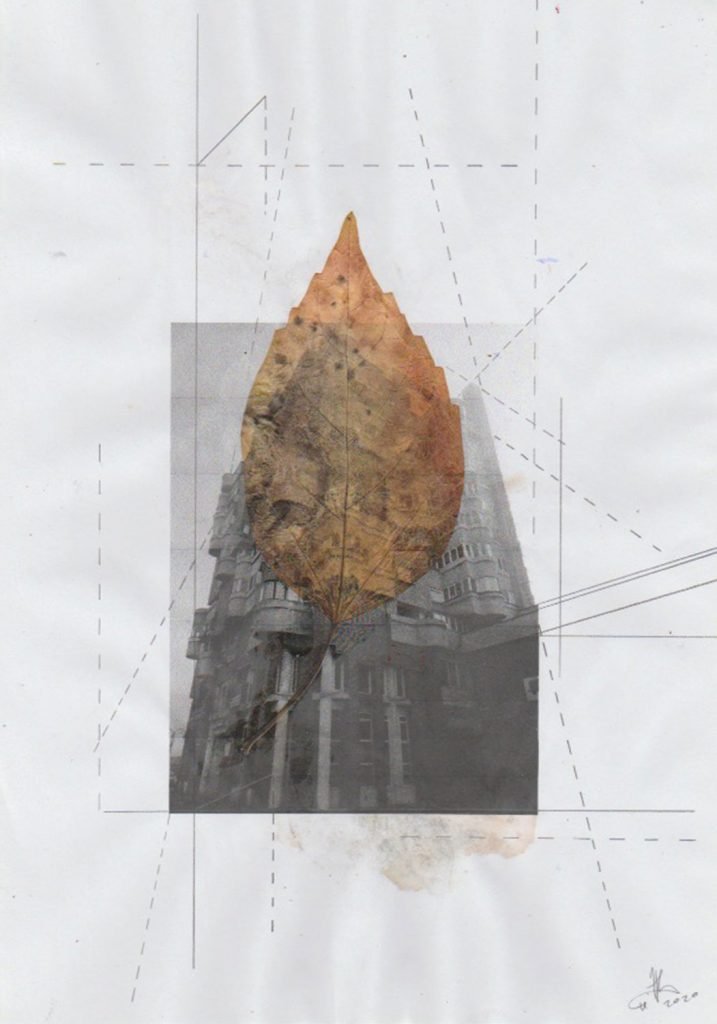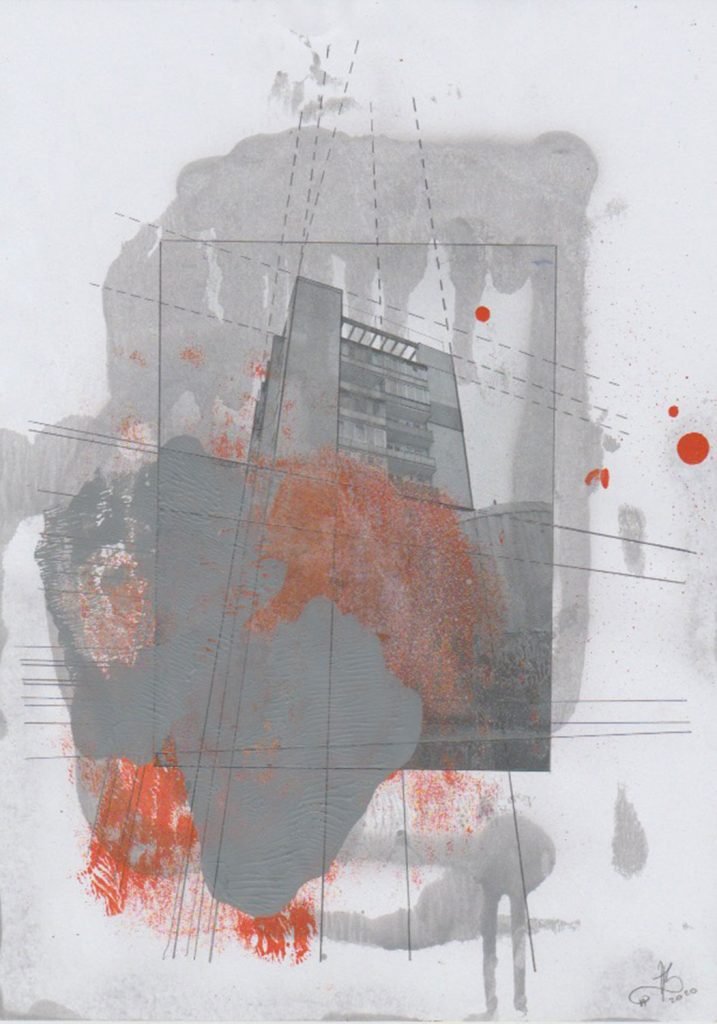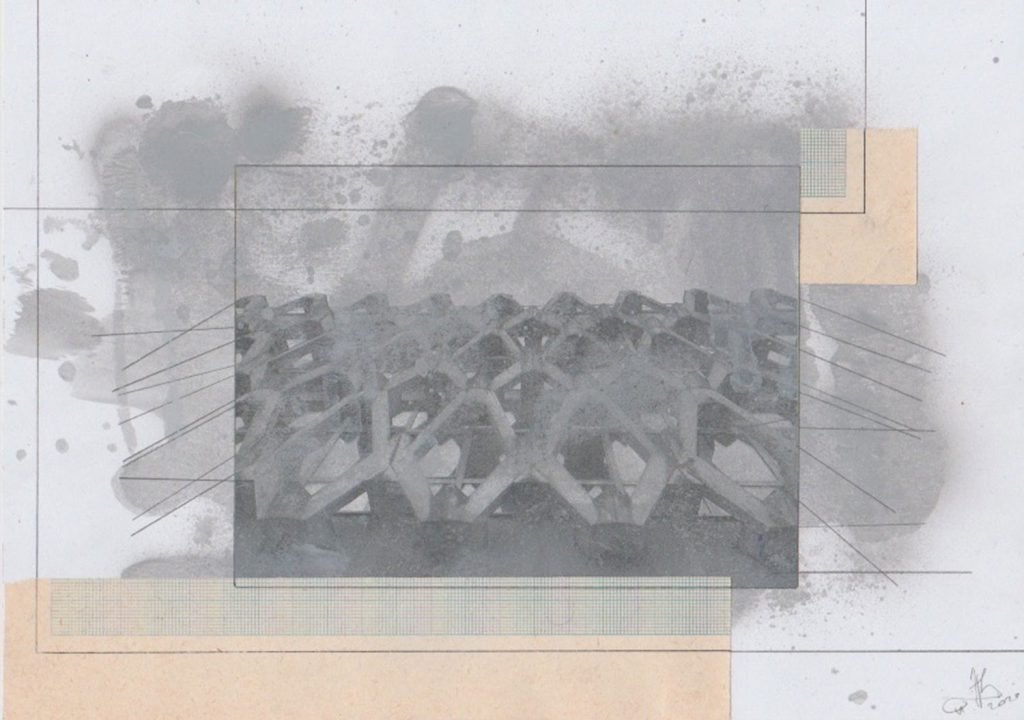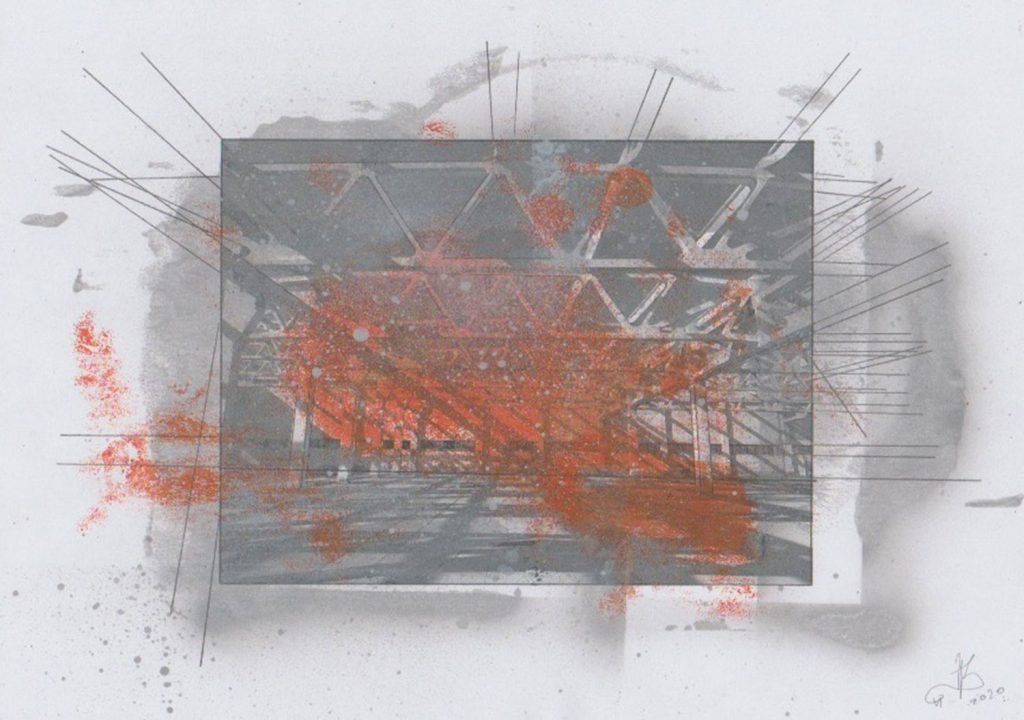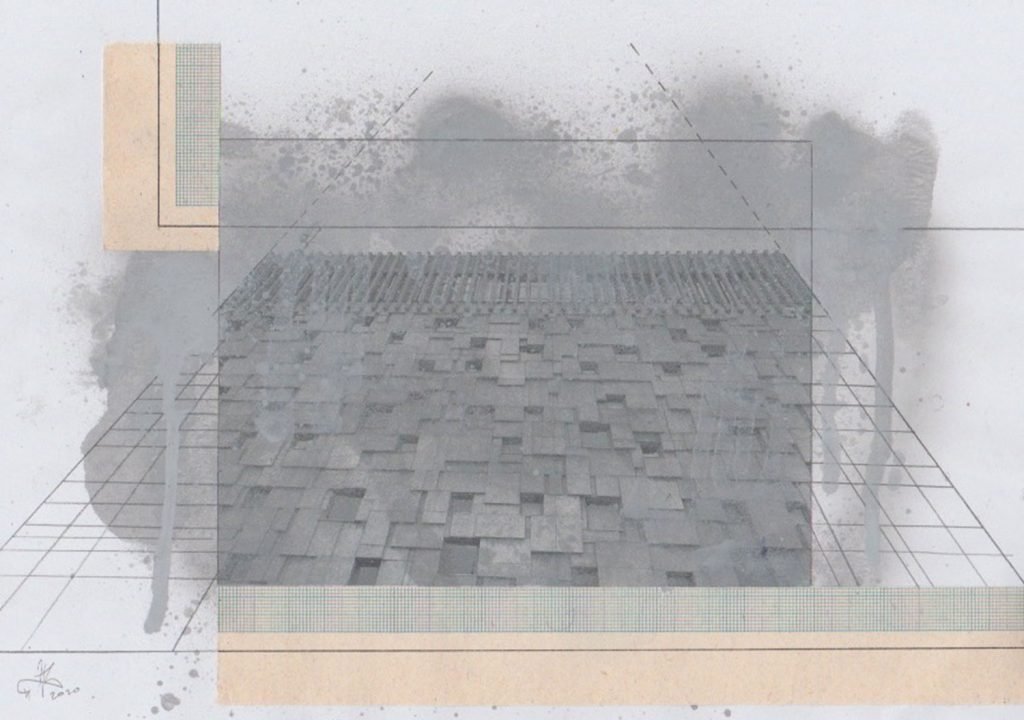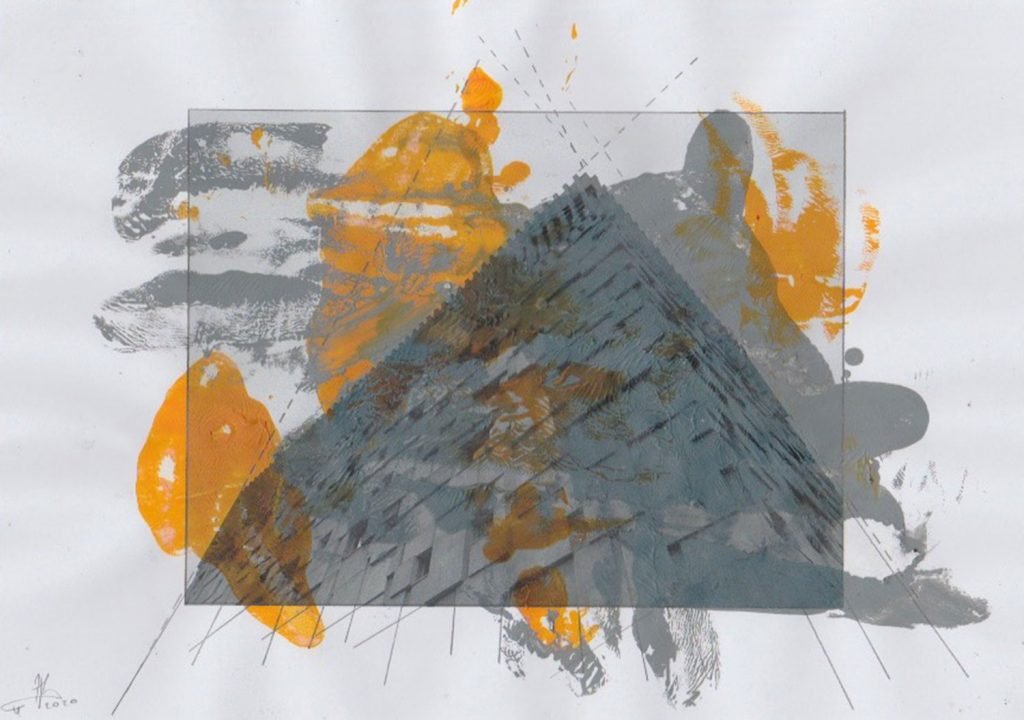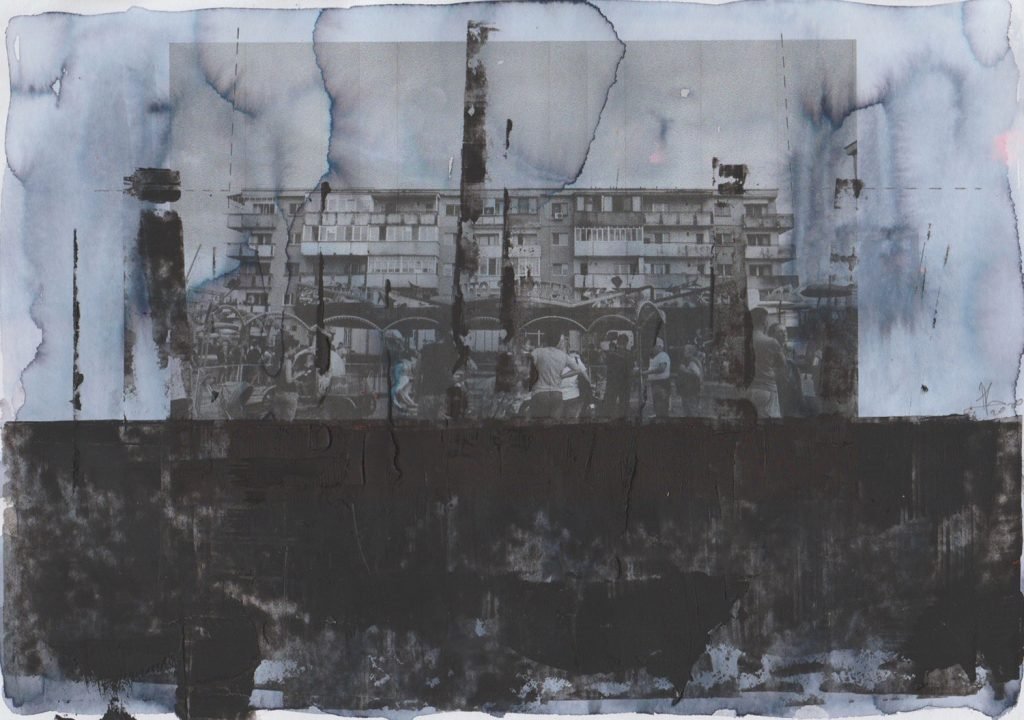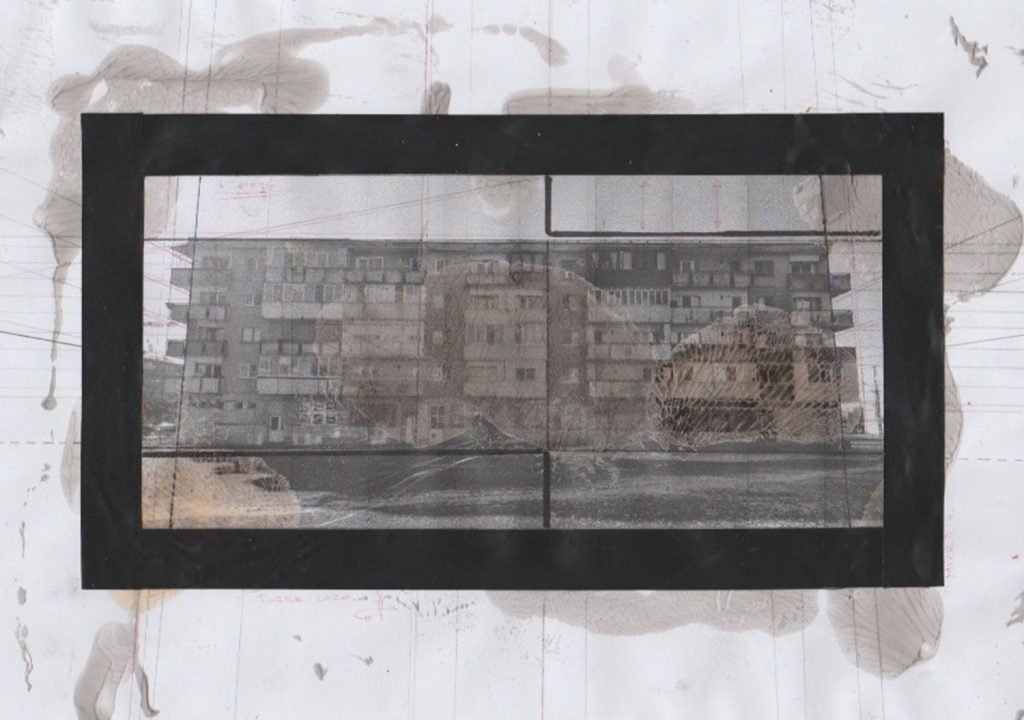“My art is closely connected to the place where I am, and the experiences that place offers me. I consider myself a collector, I collect stories, memories of the places and people around. I can be considered “a social practice installation artist”. I recover seemingly useless material fragments that come from precise contexts. The hospital’s wall where I was treated when I had cancer (“About white”), the city’s sidewalk where I had grown up, and pieces of concrete from a mall that was built over a community.
My staging mechanism is very deep and requires further research. The concrete dust covering my hometown is transformed into a painting or sculpture that recalls the trauma of a community deeply affected by post-revolutionary changes in Romania. In Turda, when it rained, the vegetables turned into concrete because of the cement dust expelled in the atmosphere by the nearby factory. I depict the traumatic process into an emotion- making installation that creates unusual attention to some social processes lost in selective memory.”
The art of Liviu Bulea was displayed at Chrysalid’s latest exhibition “Of Wandering Concrete and A Displaced Camera” until the 29th of February 2021. By using various material he finds and adding elements of nature, Liviu shapes his own universe that accentuates the dichotomy present in his hometown, Turda (Romania). He joins natural and industrial environments the same way they (in)elegantly meet around the town. We wanted some more insights on the origin of his work, as well as the evolutions that he envisions. Whilst you can visit the exhibition in Rotterdam, Liviu answered to our questions from Romania.
Chrysalid Gallery: You often consider yourself ‘a social practice installation artist’. Could you explain more what you mean by this?
Liviu Bulea: I was first called so by the curator Razvan Ion, who is also the director of the Bucharest Biennial, in a text he wrote about me and I have been using this description ever since. I consider myself a “social practice installation artist” because most of the installations I produce are related to various problems that have affected me personally and affected many other people in society. I made projects about the condition of hospitals in Romania: “About White”; about pollution and how it affects us: “Under The Grey Dust”; the consequences of pollution on nature: “About Grey”; about why Romanians leave Romania during a residency in Graz, Austria and last but not least about the community of which I am part of LGBTQ +: “Diversitas” etc. In all these projects the most important thing was to talk about some problems that I experienced but which I was able to develop through interaction with people who went through the same problem, collecting their stories or even involving them in the development process. The result of many of my exhibitions was also in a debate with the public on the topic addressed, at the invitation of some institutions.
CG: You also mention the trauma of some communities who got greatly impacted by the post-revolutionary changes in Romania. How and to what extent did you experience this trauma and those evolutions?
LB: I experienced them strongly and I still am, I was born in January 1989, so I lived in communism for a year, and then from 1990 I lived in “democracy”. What happened in the 90s in Romania was chaos, the money had no value, we lived on aid sent from abroad; my mother used to tell me that I had an aunt in France who sent me clothes, but it was the aid sent to the poor people in Romania. To have a better life, a good part of my family and friends decided to move to another country. The communist mentality persists to this day and the worst thing is that the same communist politicians, or their children, are still in power, corruption being high. We are talking about a non-functional and corrupt health system, an outdated education system, dysfunctional economy, corrupt police, etc. The repercussions of that period are still strong in Romania and as an artist, it is hard because there is never money for culture and state art institutions are mostly in disrepair.
CG: There is this strong dichotomy between natural and industrial elements observable in your work. So strong that cement and concrete, for instance, becomes people’s most shared element whilst nature is being killed by it. What direction do you see yourself explore more for your future work?
LB: In the future I think I will get to talk about a utopian world, I want to create my universe in which there is a balance between nature and industry. There was always a duality inside me between loving the industrial cities and loving nature. My Grandmother took me many times to pick up healing plants, mushrooms, flowers from the Carpathian Mountains in Transylvania, she used to live there. The little I know and love about nature has to do with her and the memories she created for me. After those magical moments, I would always come back to Turda an industrial city, where I live to this day. So I think the future direction will be a combination of the two but in a world created by me.
CG: You collect different elements from buildings etc. that you find relevant for your art. If you were to continue this in few years, what new objects do you believe will be at your disposition that you cannot find at the moment? Inversely, which ones do you think will disappear?
LB: The objects that are not available to me now are buildings (houses, factories, etc.) and the surrounding lands. I want to create the universe I was telling you about, in which to live and work and make it available to the public. So I think this will be the next step. I don’t know what elements will disappear, but I hope that the objects I have to buy now will disappear and I will be able to recycle everything.
CG: What do you think is the impact of your art on the people who are familiar with the environment you grew up in? What kind of impact would you like it to be?
LB: I collected all the stories from people, they described to me what the places I illustrate in my installation looked like or they guided me where to collect what I needed; most of them when they saw the final result, they saw something beautiful created from some painful memories. I never think about the impact my work could have I would never finish any work if I thought about it.
CG: Could you give us one advice or indication to keep in mind when visiting the exhibition?
LB: My advice is to explore my works in your way, but here are short thoughts about the works in the exhibition: The two major works are about the continuous changes in cities, about the feeling I have that the cities are never done building, rebuilding, renovating, it is an ongoing process. In any city I have visited in recent years there are construction sites, that is also the case with my city, Turda. All cities strive for perfection in a society that is built on ruins. The flower works are related to that duality I was talking about and the branch works are about nature in cities that are severely affected by pollution. The mixed-media photos are documentation of the buildings in my city.
He is currently doing a PhD at the University of Arts and Design in Cluj Napoca, on the relationship between art, architecture and urbanism.

